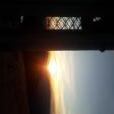زیر گنبد کبود POD NIEBIESKIM NIEBEM
-
Ostatnio w Warsztacie
-
Najczęściej komentowane w ostatnich 7 dniach
-
- 38 odpowiedzi
- 2 289 wyświetleń
-
- 29 odpowiedzi
- 792 wyświetleń
-
- 15 odpowiedzi
- 291 wyświetleń
-
- 12 odpowiedzi
- 287 wyświetleń
-
- 11 odpowiedzi
- 189 wyświetleń
-











Rekomendowane odpowiedzi
Jeśli chcesz dodać odpowiedź, zaloguj się lub zarejestruj nowe konto
Jedynie zarejestrowani użytkownicy mogą komentować zawartość tej strony.
Zarejestruj nowe konto
Załóż nowe konto. To bardzo proste!
Zarejestruj sięZaloguj się
Posiadasz już konto? Zaloguj się poniżej.
Zaloguj się